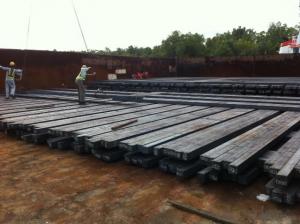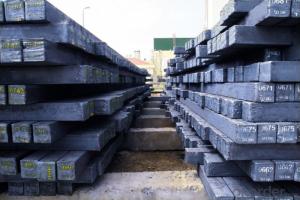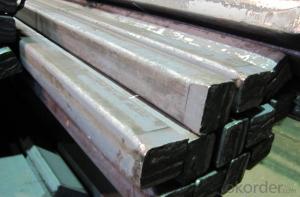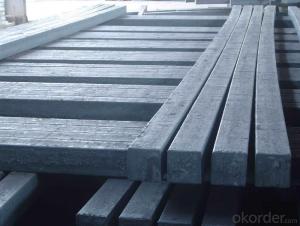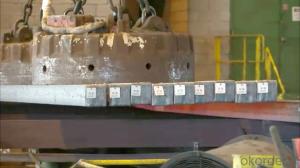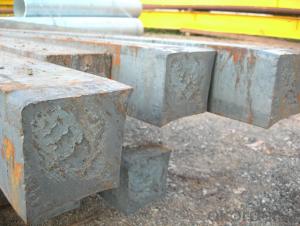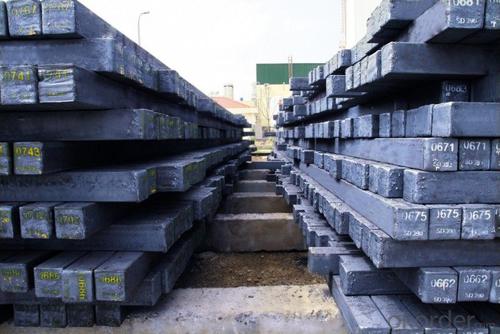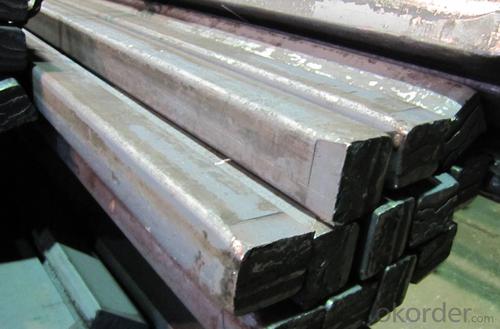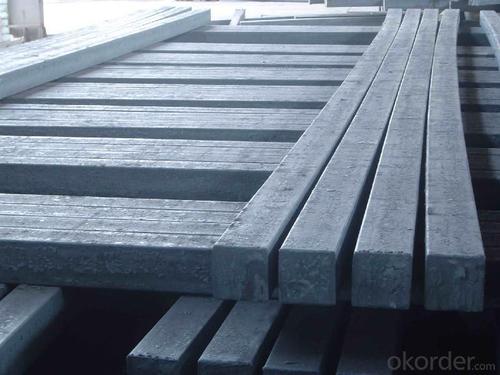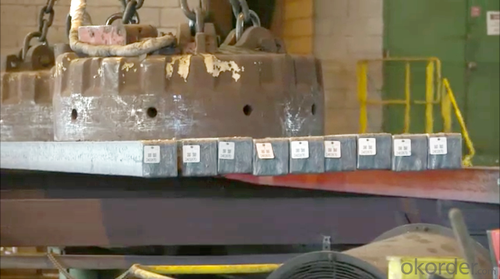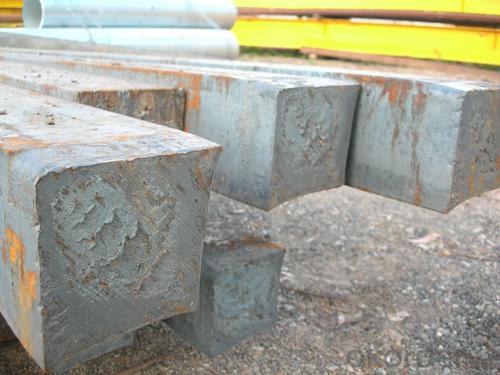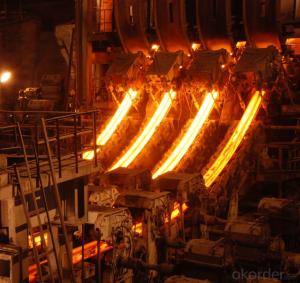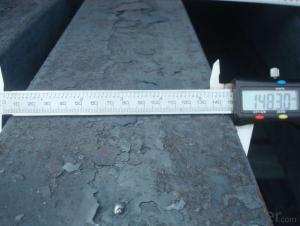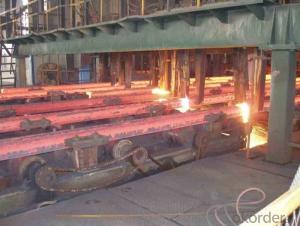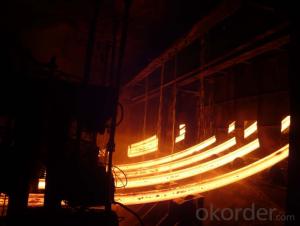Hot Rolled Steel Billet 3SP Standard 170mm
- Loading Port:
- Shanghai
- Payment Terms:
- TT OR LC
- Min Order Qty:
- 100 m.t.
- Supply Capability:
- 10000 m.t./month
OKorder Service Pledge
OKorder Financial Service
You Might Also Like
Structure of Hot Rolled Steel Billet 3SP Standard 170mm

Description of Hot Rolled Steel Billet 3SP Standard 170mm
Prepainted Rolled steel Coil is a kind of coated steel coil/sheet. With the cold rolled steel of different strength and thickness as substrate, it is produced through applying Al-Zn coat on both faces by hot dip process. In its coating, Al accounts for about 55%, Si 1.6%, while the remaining is Zn. Aluminum zinc coils enjoys both the physical protective feature and durability of Al and the electrochemical protective property of Zn. And its surface has bright silver color and regular embossed-like figure, which are highly decorative. RAL Scale Z35 Prepainted Rolled Steel Coil for Construction Roofing

Main Feature of Hot Rolled Steel Billet 3SP Standard 170mm
1.Corrosion resistance: It mainly depends on the zinc protection. When the zinc being worn,
2. Heat resistance: steel sheet has excellent heat resistance, can withstand high temperatures over 300 centigrade, and is similar with aluminized steel high temperature oxidation resistance. It often used in chimney pipes, ovens, fluorescent lighting device and the device cover.
3. Heat reflective: Galvanized steel plate heat-reflective high rate is twice as galvanized steel, often used to make insulation materials. RAL Scale Z35 Prepainted Rolled Steel Coil for Construction Roofing
Applications of Hot Rolled Steel Billet 3SP Standard 170mm
1. Construction and building: roofing; ventilating duct; handrail; partition panel;etc.
2. Electric appliance: refrigerator; washing machine; refrigerator; DVD;etc.
3.Transportation: oil tank; gas tank;road sign; etc.
4.Agriculture constructions :barn; etc.RAL Scale Z35 Prepainted Rolled Steel Coil for Construction Roofing
5.Others:vending machine; game machine; auto parts spare parts etc.
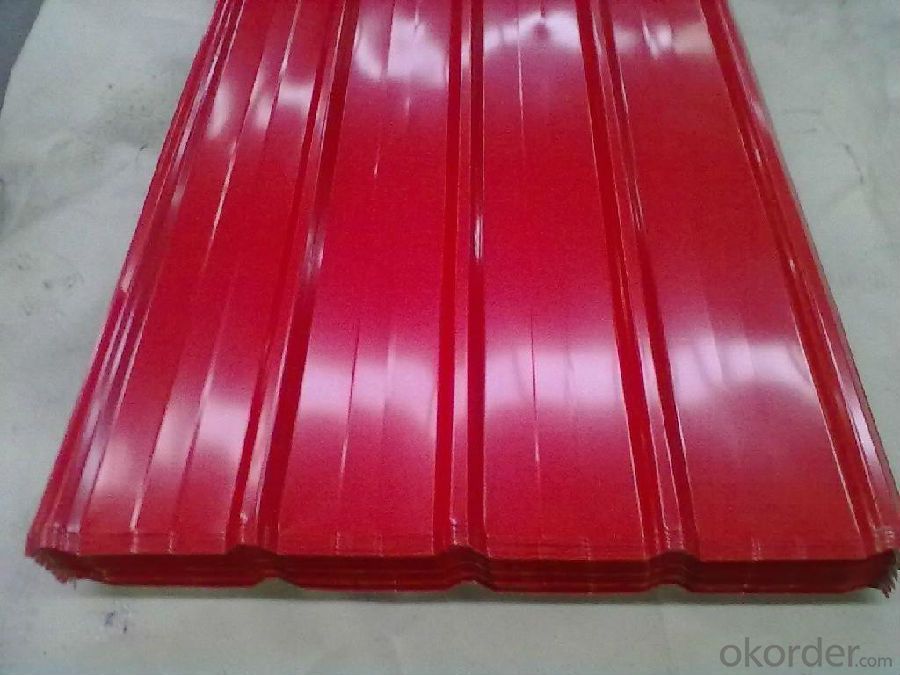
Specifications of Hot Rolled Steel Billet 3SP Standard 170mm
Product | Hot Rolled Steel Billet 3SP Standard 170mm |
Material Grade | SGCC / SGCH / DX51D+AZ, etc |
Thickness | 0.5-3.0mm |
Width | 700-1500mm |
Tolerance | Thickness: +/-0.02mm , Width:+/-2mm |
Zinc-coating | AZ30-150g/m2 |
Technique | Raw material: Hot rolled steel coil --> Cold rolled_>hot dipped galvalume |
Surface | Dried, Chromated, Unoiled,RAL Scale Z35 Prepainted Rolled Steel Coil for Construction Roofing |
Spangle | Regular spangle , small spangle, zero spangle |
ID | 508MM 610MM |
Coil weight | 25MT max |
Export package | Cardboard inner sleeves, Waterproof paper, galvanized steel covered and steel strip packed |
FAQ of Hot Rolled Steel Billet 3SP Standard 170mm
We have organized several common questions for our clients,may help you sincerely:
1. What is the minimum order quantity ?
Our MOQ is 100 mt for each size each specification. Usually we can offer discount if can buy large QTY once. RAL Scale Z35 Prepainted Rolled Steel Coil for Construction Roofing
2. How long can we receive the product after ordering?
Our general delivery time is 30 days after confirmation, but so some special orders, we have offer special delivery time
3. How to guarantee the quality of the products?
We have established the international advanced quality management system ,every link from raw material to final product we have strict quality test;We resolutely put an end to unqualified products flowing into the market. At the same time, we will provide necessary follow-up service assurance.
4. What is the payment?
We accept T/T, L/C
- Q: How are steel billets used in the manufacturing of gears?
- Gears, which are mechanical devices that transmit power and motion, rely heavily on steel billets for their production. These billets, obtained through casting or rolling, are semi-finished steel products that serve as the foundation for gear manufacturing. To begin the process, the steel billets are heated to a specific temperature and then subjected to mechanical force, such as hammering or pressing, to shape them into the desired gear form. Once the initial shape is achieved, the billets undergo various machining operations, including milling, drilling, and grinding, to remove excess material and create precise dimensions and features. Steel billets offer numerous advantages in gear manufacturing. Their durability and strength allow them to handle heavy loads and high-speed rotations, while their excellent wear resistance ensures long-lasting performance. Additionally, steel billets can be easily machined to achieve intricate gear designs, enabling customization and optimization of gear performance. In conclusion, steel billets are indispensable in gear manufacturing as they provide the necessary strength, durability, and precision for gears to function effectively. Through forging and machining processes, these billets are transformed into gears capable of efficiently transmitting power and motion.
- Q: What are the potential applications of steel billets in the aerospace industry?
- The aerospace industry can make use of steel billets in a variety of ways. One primary application is using them to produce structural components. By forging or machining steel billets, it is possible to create strong and long-lasting parts like beams, brackets, and frames. Another important use of steel billets in aerospace is for manufacturing landing gear components. These components need to endure high levels of stress and fatigue, and steel billets provide excellent strength and toughness properties that make them well-suited for this purpose. Steel billets can also be employed in the production of engine components. The aerospace industry requires materials that can withstand extreme temperatures and maintain their mechanical properties under high-stress conditions. By subjecting steel billets to heat treatment, it is possible to enhance their resistance to heat and corrosion, making them suitable for use in engine parts such as turbine blades, shafts, and casings. Furthermore, steel billets can be utilized in the construction of fuel systems and hydraulic systems. These systems often require components that can handle high pressure and resist corrosion. Steel billets can be machined into fittings, connectors, and valves that meet these requirements, ensuring the safety and reliability of these critical systems. Overall, the potential applications of steel billets in the aerospace industry are extensive and varied. From structural components to landing gear systems, engine parts, and fuel systems, steel billets offer the necessary strength, durability, and resistance properties required for the demanding conditions of aerospace operations.
- Q: The form of carbon in carbon steels
- In solid solution, it is in the interstitial space of lattice, resulting in lattice distortion. The solubility of carbon in gamma -Fe is maximal, but not more than 2.11%; the solubility of carbon in alpha -Fe is not more than 0.0218%; and in Delta 6-Fe, no more than 0.09%.
- Q: How are steel billets cut into smaller pieces?
- Steel billets are typically cut into smaller pieces using a process called sawing or shearing. This involves using specialized machinery equipped with blades or shear tools to slice the billets into desired lengths or sizes.
- Q: How do steel billets contribute to the manufacturing of aerospace components?
- Steel billets play a crucial role in the manufacturing of aerospace components. These billets are semi-finished products that are used as a starting material in the fabrication of various aerospace parts. One of the primary ways steel billets contribute to the manufacturing of aerospace components is through their versatility. Steel is known for its exceptional strength, durability, and resistance to corrosion, making it an ideal material for aerospace applications. Billets made from high-quality steel provide the necessary foundation for the production of components that can withstand the extreme conditions experienced during aerospace operations. Steel billets are often used in the production of critical aerospace parts such as engine components, landing gear, structural frames, and fasteners. The billets are first heated and then subjected to various forming and machining processes. These processes, such as forging, rolling, and extrusion, help shape the steel billets into the desired components, ensuring they meet the stringent requirements for strength, precision, and weight reduction demanded by the aerospace industry. Moreover, steel billets offer excellent design flexibility. They can be easily machined and shaped into complex geometries, allowing manufacturers to create intricate aerospace components with precise tolerances. This flexibility enables the production of lightweight yet strong parts, contributing to the overall weight reduction of aircraft and enhancing fuel efficiency. Furthermore, steel billets offer superior metallurgical properties. Through proper heat treatment and alloying techniques, the mechanical properties of the steel can be tailored to meet specific aerospace requirements. This allows manufacturers to achieve the desired balance between strength, stiffness, and toughness in the final components, ensuring they can withstand the high-stress environments encountered in aerospace applications. In conclusion, steel billets are an indispensable part of the manufacturing process for aerospace components. Their versatility, strength, design flexibility, and metallurgical properties make them an ideal starting material for the production of critical parts in the aerospace industry. By utilizing steel billets, manufacturers can ensure the production of high-quality, reliable, and durable components that meet the rigorous demands of the aerospace sector.
- Q: What are the potential applications of steel billets in the food and beverage industry?
- Steel billets have numerous potential applications in the food and beverage industry. One of the main uses is in the production of stainless steel equipment, such as tanks, vessels, and processing machinery. Stainless steel is a preferred material in the food and beverage industry due to its corrosion resistance, durability, and hygienic properties. Steel billets are often used to manufacture stainless steel pipes and fittings, which are essential components in food and beverage processing plants. These pipes and fittings are used for conveying fluids, gases, and food products, ensuring a safe and reliable transportation system. In addition, steel billets can be used to produce stainless steel bar and rod, which are used in various applications such as kitchen equipment, cutlery, and utensils. Stainless steel bar and rod are highly resistant to staining, rusting, and chemical corrosion, making them ideal for use in food preparation and serving. Furthermore, steel billets can be used to manufacture stainless steel sheets and plates, which are used for food storage and packaging. Stainless steel sheets and plates provide a hygienic and durable surface for food storage containers, countertops, and shelving units. They are easy to clean, resistant to bacterial growth, and do not react with acidic or alkaline food products. Overall, steel billets play a crucial role in the food and beverage industry by providing the necessary raw material to manufacture stainless steel equipment, pipes, fittings, bar, rod, sheets, and plates. The use of stainless steel enhances food safety, ensures product integrity, and contributes to the efficient and hygienic operation of food and beverage processing facilities.
- Q: Can steel billets be used for making kitchen utensils?
- Kitchen utensils can indeed be made using steel billets, which serve as raw materials that can be molded and crafted into various products. These steel billets must possess certain qualities like resistance to corrosion, durability, and the ability to withstand heat if they are to be used for kitchen utensils. The process of creating these utensils involves melting and casting the steel billets, which are then forged into the desired shapes and sizes. This allows for the production of knives, spoons, forks, cookware, and other utensils. To improve performance and appearance, the steel used in kitchen utensils is often treated and finished. Ultimately, steel billets play a crucial role in the manufacturing process of kitchen utensils by providing the necessary raw material needed to create durable and functional tools for cooking and food preparation.
- Q: What are the different surface treatments available for steel billets?
- There are several different surface treatments available for steel billets, each serving a specific purpose and offering unique benefits. Some of the commonly used surface treatments for steel billets include: 1. Hot-dip galvanizing: This process involves immersing the steel billets in a bath of molten zinc, creating a protective coating that helps prevent corrosion. Hot-dip galvanizing provides excellent corrosion resistance and durability, making it suitable for outdoor applications. 2. Electroplating: Electroplating involves depositing a layer of metal onto the surface of the steel billets using an electrical current. This treatment can enhance the appearance of the steel while providing corrosion resistance and improving wear resistance. 3. Powder coating: Powder coating is a dry finishing process where a fine powder is electrostatically applied to the steel billets and then cured under heat. This treatment creates a durable and attractive finish that is resistant to chipping, scratching, and fading. 4. Passivation: Passivation is a chemical treatment that removes contaminants and creates a protective oxide layer on the surface of the steel billets. This process enhances the corrosion resistance of the steel and improves its appearance. 5. Phosphating: Phosphating involves applying a phosphate coating to the steel billets, which enhances corrosion resistance and improves paint adhesion. Phosphating is commonly used as a pre-treatment before painting or powder coating. 6. Shot blasting: Shot blasting is a mechanical surface treatment that involves blasting steel billets with small abrasive particles at high velocity. This process removes surface contaminants, scales, and rust, resulting in a clean and roughened surface suitable for further treatments or coatings. 7. Acid pickling: Acid pickling is a chemical treatment that removes oxide scales, rust, and other impurities from the surface of the steel billets. This treatment provides a clean and smooth surface, preparing the steel for subsequent processing or coating. These are just a few examples of the surface treatments available for steel billets. The choice of treatment depends on the specific requirements of the application, including corrosion resistance, appearance, and functional properties. It is essential to consider factors such as cost, environmental impact, and performance expectations when selecting the appropriate surface treatment for steel billets.
- Q: What are the different types of surface defects found in steel billets?
- There are several types of surface defects that can be found in steel billets, including cracks, scabs, laps, seams, and surface pinholes.
- Q: How do steel billets contribute to the overall safety of a product?
- There are several ways in which steel billets contribute to the overall safety of a product. Firstly, the manufacturing process of steel billets is controlled to ensure a high level of quality and consistency in the material. This means that the steel produced from these billets will have consistent mechanical properties, such as strength and toughness, which are crucial for ensuring the safety of the final product. Furthermore, various testing and inspections are carried out on steel billets during the manufacturing process to ensure that they meet the required specifications and standards. This includes checks for surface defects, internal soundness, and proper chemical composition. By ensuring that the steel billets are defect-free and meet the necessary quality standards, the risk of failure or malfunction in the final product is significantly reduced. Moreover, steel billets are known for their exceptional strength and durability. Steel is a highly robust material that can withstand high temperatures, pressure, and impacts without deforming or breaking. This inherent strength makes steel billets particularly suitable for applications where safety is a priority, such as in the construction of buildings, bridges, and infrastructure. Additionally, steel billets can be easily shaped and formed into various components and structures, allowing for precise manufacturing and design. This versatility enables engineers and designers to create products with optimal safety features, such as reinforced beams or structures that can withstand extreme loads or impacts. The ability to customize steel billets to meet specific safety requirements ensures that the final product is tailored to address potential safety risks and hazards. Lastly, steel billets are highly resistant to corrosion, making them ideal for applications in harsh environments or exposure to corrosive substances. The resistance to corrosion ensures that the structural integrity of the product is maintained over time, reducing the likelihood of failures due to material degradation. In conclusion, steel billets contribute to the overall safety of a product by providing a high-quality, defect-free, strong, and durable material that can be customized to meet specific safety requirements. The controlled manufacturing process, rigorous testing, and inherent properties of steel make it an ideal choice for ensuring the safety and reliability of various products.
Send your message to us
Hot Rolled Steel Billet 3SP Standard 170mm
- Loading Port:
- Shanghai
- Payment Terms:
- TT OR LC
- Min Order Qty:
- 100 m.t.
- Supply Capability:
- 10000 m.t./month
OKorder Service Pledge
OKorder Financial Service
Similar products
Hot products
Hot Searches
Related keywords
